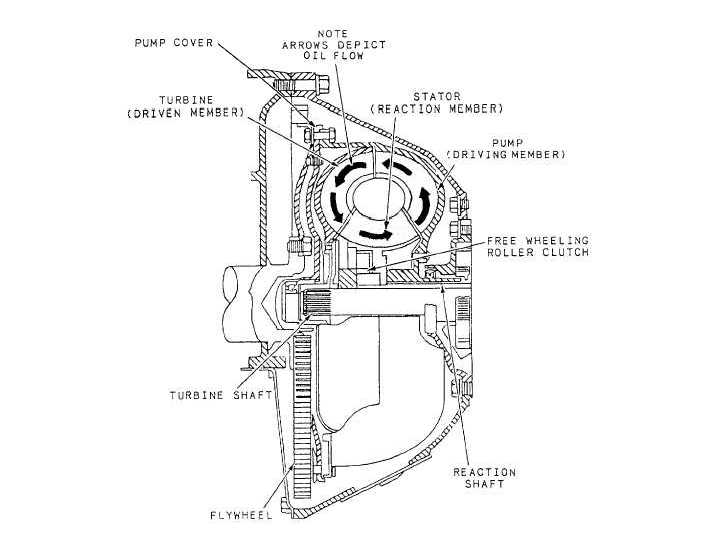The torque converter, as shown in figure 7-15, consists of the pump (driving member), the turbine (driven or output member), and the stator (reaction member). The converter cover is welded (some maybe bolted) to the pump to seal all three members in an oil-filled housing. The converter cover is bolted to the engine flex-plate which is bolted directly to the engine crankshaft. The converter pump is, therefore, mechanically connected to the engine and turns at engine speed whenever the engine is operating.
When the engine is running and the converter pump is spinning, it acts as a centrifugal pump, picking up oil at the center and discharging this oil at its rim between the blades. The shape of the converter pump shells and blades causes this oil to leave the pump, spinning in a clockwise direction toward the blades of the turbine. As the oil strikes the turbine blades, it imparts a force to the turbine, causing it to turn. Figure 7-16 shows the torque converter in the coupling stage. When the engine is idling and the converter is not spinning fast, the force of the oil is not great enough to turn the turbine with any efficiency. This allows the vehicle to stand in gear with the engine idling. As the throttle is opened and the pump speed is increased, the force of the oil increases and the engine power is more efficiently transmitted to the turbine member and the gear train. After the oil has imparted its force to the turbine, the oil follows the contour of the turbine shell and blades so that it leaves the center section of the turbine spinning counterclock-wise.
Because the turbine member has absorbed the force required to reverse the direction of the clockwise spinning of oil, it now has greater force than is being delivered by the engine. The process of multiplying

Figure 7-15. - Torque converter, partial cutaway view.
Continue Reading